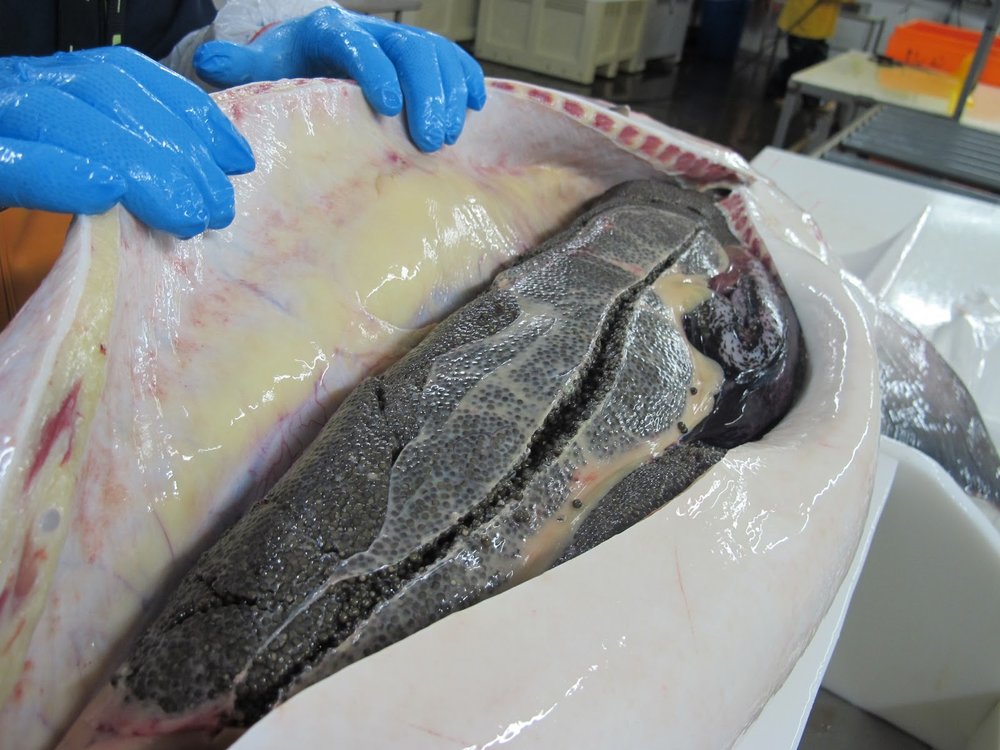What Is Caviar ?
Caviar is fish roe of certain species of fish, most notably the Sturgeon known to most as “Black Caviar” and Non Sturgeon, the most popular being Salmon “Red Caviar”. It is commercially marketed worldwide as a delicacy and is eaten as a garnish or healthy snack/appetizer. The only thing added to Fresh Caviar is 2-5% of salt. Cheaper quality caviar tends to have over 7-8% salt content, companies do this to mask the bad taste of inferior products. Caviar is also known to be a Super Food with several health benefits .

What Are The Health Benefits of Eating Caviar ?
Caviar is considered in appetizer that is to be enjoyed in small amounts. It is tasteful and healthy. Made of fish roe and salt, it is a good source of calcium and phosphorus, as well as protein, selenium, iron, magnesium, and Vitamins B12, B6, B2, B44, C, A, and D. It also contains the amino acids arginine and histidine, as well as the essential amino acids lysine, isoleucine, and methionine. One tablespoon of caviar contains a gram of Omega- 3 fatty acids, which help prevent heart disease .

What are the Nutritional Facts?
Nutritional Value of Sturgeon Caviar (Per 100g)
Calories: 270
Protein: 25.3 g
Fat: 17 g
Cholesterol: 440 mg
Sodium: 1,700 mg
Phosphorus: 330 mg
Potassium: 164 mg
Calcium: 51 mg
Eating Caviar
How To Eat Caviar?
Classic caviar service is simple and elegant. Keep caviar refrigerated until ready to serve. Ideally nestle the entire open tin or jar in a bed of crushed ice, with the lid alongside. This is not only attractive, but also informative to your guests. Accompany caviar with fresh toast points, with or without butter, blini, or potatoes. Perhaps a touch of crème fraiche, but nothing more to mask the intense and unique experience of eating caviar.
What Are The Traditional Condiments Served With Caviar?
The traditional condiments are hard boiled egg yolks, egg whites, chives, sour cream, capers, and red onions. However, caviar connoisseurs insist that any ingredient that alter the taste and distract from the pure flavour of Sturgeon caviar should not be used and that these condiments should be saved for other less expensive grades of caviar only.
How To Store Caviar?
Some caviar can be stored frozen for up to a year, and some others really should never be frozen at all, but should only be kept refrigerated. Caviar should be consumed on the same day that the tin is opened. Whenever possible the caviar should be kept cold over crushed ice.
Unopened/Sealed containers of fresh caviar should also be stored in the refrigerator, optimal temperature is -2 to +2 Celsius. Stored in this manner, the caviar should last 3-4 months in a Sealed tin. Unopened pasteurized caviar tins typically hold for 6-9 months on the shelf. If caviar has been frozen, very slowly return it to a thawed state by keeping it in the refrigerator over ice for a day or two. We don’t recommending freezing caviar, when unfrozen the texture changes and becomes more soft/watery.

